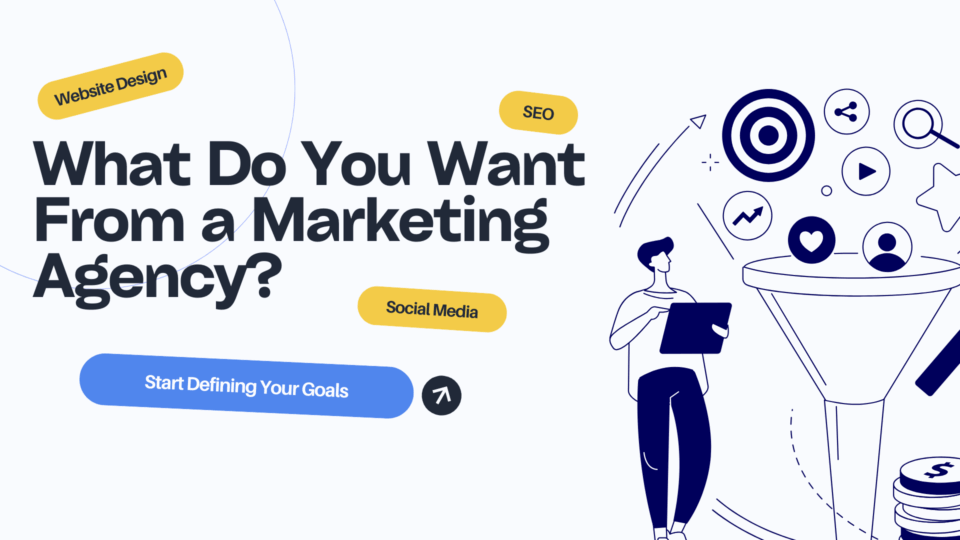
How to Prevent Click Fraud
May 31, 2022
The Latest On How Video Marketing Shapes Engagement
July 31, 2022The Exciting Future Of Online Audiences: Web 3.0
What is Web 3 and how will it change your audience?
We’ve been hearing a lot of buzz about Web 3. It’s created a lot of concern for many people. Some think it’s ridiculous, some find it fascinating. No matter where you stand on the idea of it, the next generation of the internet is coming.
What is Web 3?
Web3 (also known as Web 3.0) is a concept for a new version of the World Wide Web based on blockchain technology and includes principles like decentralization and token-based economics. According to some experts, Web3 will provide consumers with greater data security, scalability, and privacy while also combating the power of huge technological businesses.
Web 3 Concepts & Audience Shifts You Could See Soon
Consumers’ enthusiastic excitement about Web 3’s possibilities demonstrates how eager they are to see the internet, companies, and social change.
Here are a few organizational adjustments we’ll witness in the near future, thanks in part to Web 3 development, according to our partners at HubSpot:
Consumers will want more say in the online products and platforms they use
Right now, the platforms we use daily, like Google and Facebook are centralized. When you log on to a platform like Facebook, you’re exchanging web data with its Meta servers.
This means that Meta and its biggest stakeholders ultimately determine how Facebook works, user rules, how it uses your data, and how the UX changes over time. And, if Meta were to pull the plug on Facebook servers, it would disable usage for everyone.
Because of this, just a few key tech companies and big-name investment firms have a solid hold over many of the things we do and see online. And, in certain areas – as with data usage, social media feeds, search engines, or web experience – many users wish they had more say.
But, what if users were treated more like shareholders and could give input on how a platform worked, used their data, or built experiences for them? In a decentralized Web 3 world, some believe this could be possible.
For example, some platforms, like metaverses will allow you to trade crypto, NFTs, non-crypto currency, or other items of value for a plot of land (or a stake in the platform). While large brands and investment firms would still likely own a majority stake in their platforms and serve as decision-makers for terms of use, users could at least personalize their experiences a bit more, or have more control over how the platform works for them.
While not all businesses will lean into decentralized platforms, those who do could put some key developments of their online products into the hands of loyal users or customers.
Giving users the ability to play a role in the evolution of platforms they use not only allows them to feel linked to a brand through a sense of ownership and trust, but it also allows you as a business owner to benefit from the ROI of user experience improvements the users themselves are making.
How Businesses Can Respond
Even if you aren’t ready for Web 3 investments, or never plan to invest in it at all, you can still take steps to make your audiences or customers feel like they have an impact on your business’s evolution. Here are a few smaller-scale ideas.
Introducing Product Developers to Customers: Oftentimes, sales and service are the only ones who talk to customers. But, product developers can learn a lot from meeting with a few loyal customers, listening to feedback, and learning about their pain points. In turn, the customer feels like their actionable and constructive feedback has been heard.
Customer Feedback Research: If your product development team prefers to look at more quantitative data, consider running a survey about your product and returning that feedback to marketing, sales, service, and product teams.
Report on Your Progress: After customers or prospects give you feedback, create a marketing plan highlighting the improvements you’ve made around your product after receiving feedback. This will show customers and prospects that you are acting on their needs and that they have a voice when they’d like to request changing something.
Customizable Features: Customization might not make your customers feel like stakeholders, but it does have similar benefits. When users can customize how online products look, feel, and work around their preferences and goals, they might feel more attachment to your product than one that allows no customization. Ask yourself, “Are there ways I can better help my customers make their own great experience with my offerings?”
Internet Users Will be Motivated by Incentives
While incentivization has been around for quite some time, blockchain technology will make it easier for brands to track and incentivize usership and community engagement in Web 3.
Imagine going on a website and being paid to spend time there, or logging into an app and receiving points that you can trade for something of value later – like cryptocurrency or even NFTs. These are the types of tactics that brands could potentially leverage to gain solid growth.
Crypto, NFT, and Blockchain Tech Will Gain More Interest
While you shouldn’t just change your whole business model or payment features to accommodate crypto, the growing interest in this currency is worth keeping on your radar if your business appeals to audiences that have invested in digital coinage.
As interest in cryptocurrency and blockchain-based transactions grows, many brands – including B2B companies have embraced crypto-based payment features on their websites or platforms for quite some time – and not just for NFT purchases. Among them are Overstock.com, Home Depot, Starbucks, and Whole Foods. Additionally, payment platforms – such as PayPal – have adapted to accept crypto-based payments.
Consumers Will Crave Experiences, Not Just Content
Over the past five years or so, experiential marketing and product experiences have gained steam. And when the COVID-19 pandemic kept any of us on lockdown, millions turned to remote experiential content with VR and AR platforms.
In the marketing and sales realm, brands like Walmart and BestBuy are already identifying ways that they can sell products through VR stores (complete with sales reps who are also logged in to a VR metaverse.
With the connectivity, speed, and advancements of Web 3, interest, and engagement in virtual experiential content could only grow.
Customers Could Yearn For Community Belonging
With Web 1, everyone focused on building communities through word of mouth within the limits of the internet. In Web 2, everyone discovered the impact of community building on major social media platforms like Facebook, Reddit, Discord, and Twitter.
Now, many community managers and company leaders are just waiting with bated breath to see how they’ll be able to invest in community building in Web 3.
Building Communities (Even in Web 2)
While you don’t necessarily have to be a Web 3 expert, coder, or developer to win over audiences in the new era, building out an active and effective web community could be a key priority for your brand in the coming years.
If you have a base following and even a few channels now, you can already get started in using tactics like these to build an engaged online community and network that you could carry over into the Web 3 era.
Here are a few quick ways to start developing a sense of community.
Meet your targets where they are: Are your audiences, customers, or targets spending time on one social media channel or platform over another? Focus on growing your community and building engagement there first.
Create great content: The core object of most communities is content. It’s some type of story, some type of exchange of ideas. If you’re going to build a remarkable brand through community, you first have to have remarkable content and remarkable stories.
Don’t be afraid of long-term bets: Communities don’t just appear overnight and take time and energy to build out.
When to Start Thinking About Web 3
Web 3 is going to be a lengthy process to implement, so don’t freak out. Like any new technology, this rollout will be fast for businesses that love to embrace the latest trends but will happen over a longer period for others.
The best thing you can do is think about your customer or target buyer and their experience and identify what you need to do to meet them where they are.
Ultimately, when you’re responding to your customer and creating experiences for them that competitors can’t – you’ll still be ahead of the curve.




